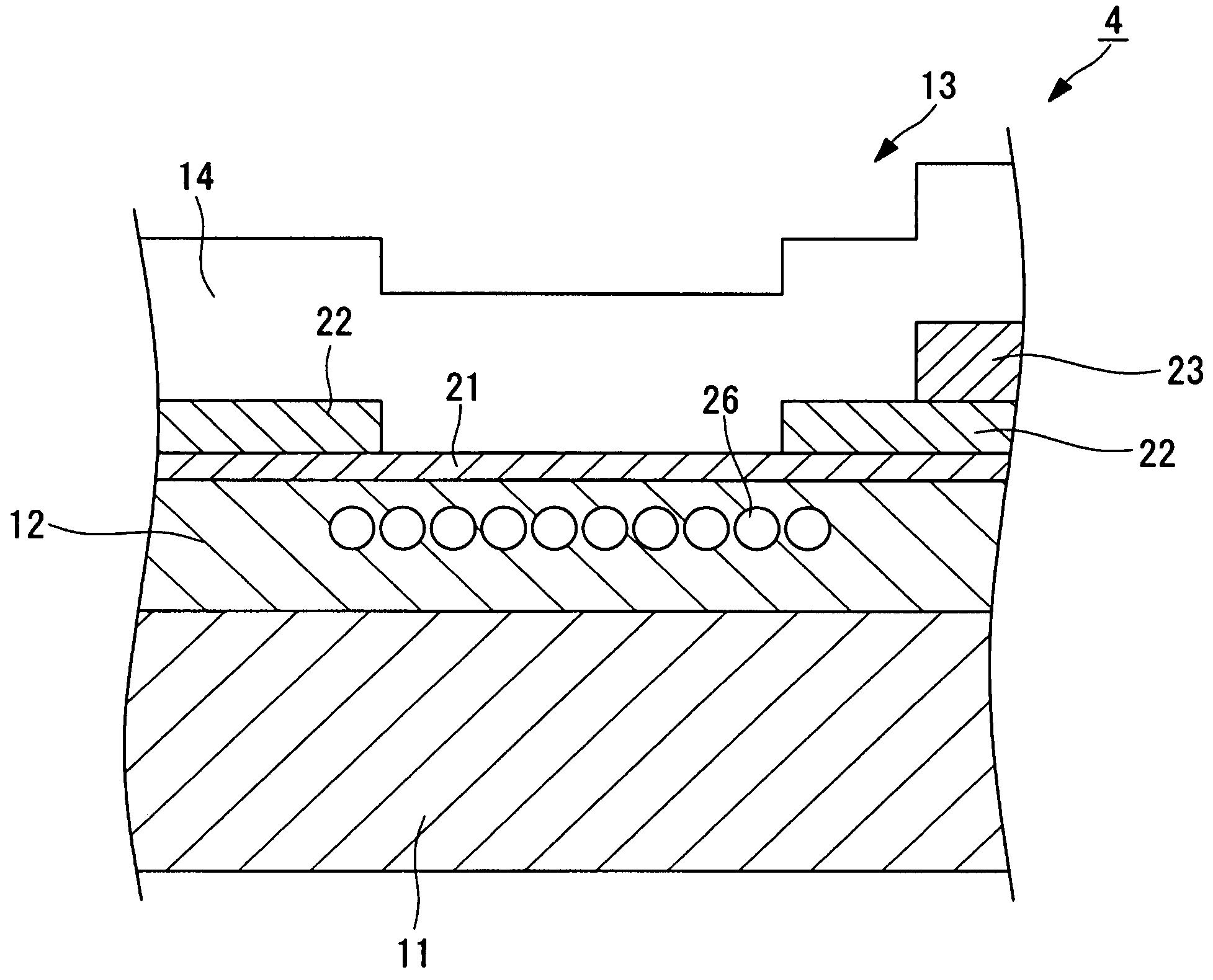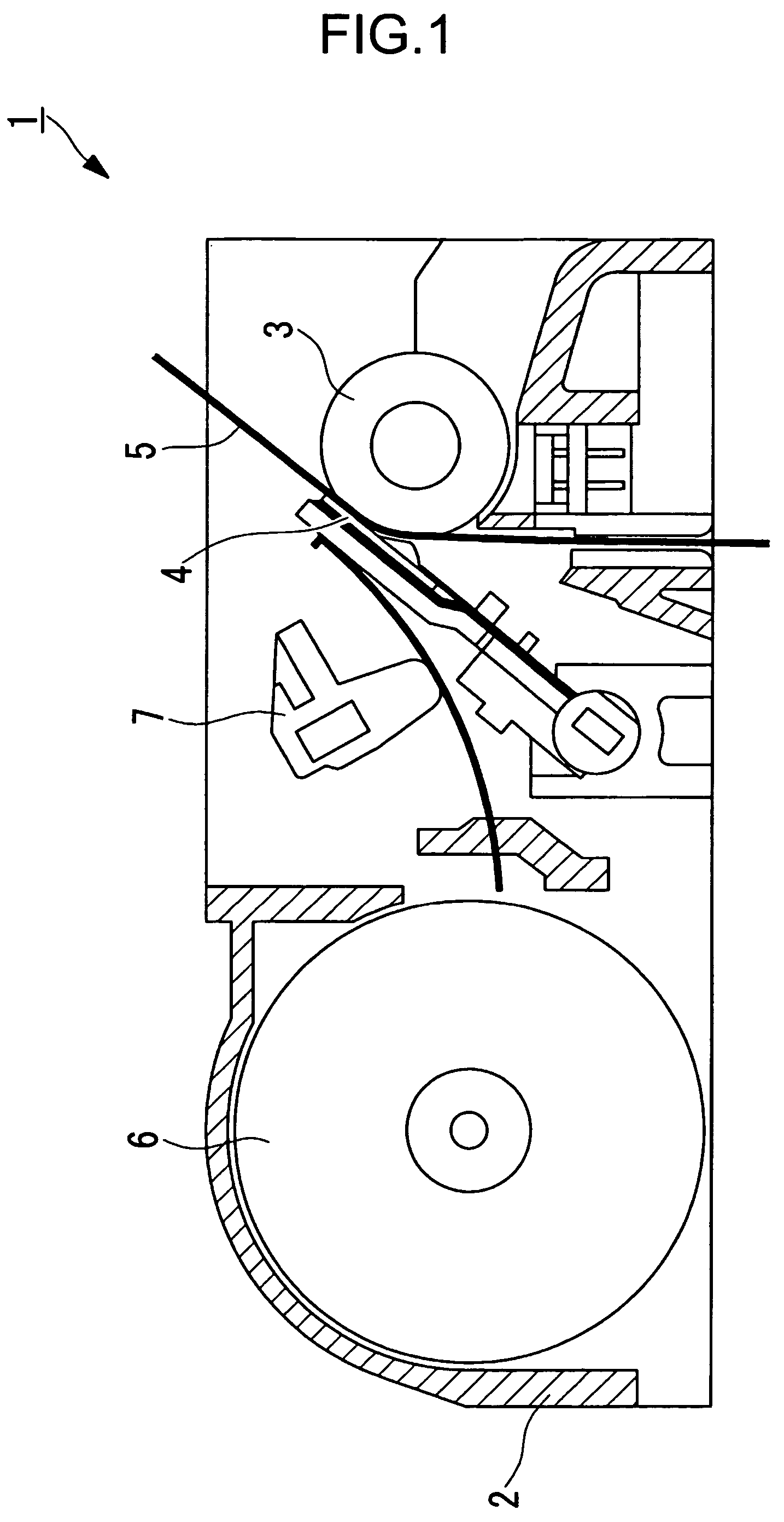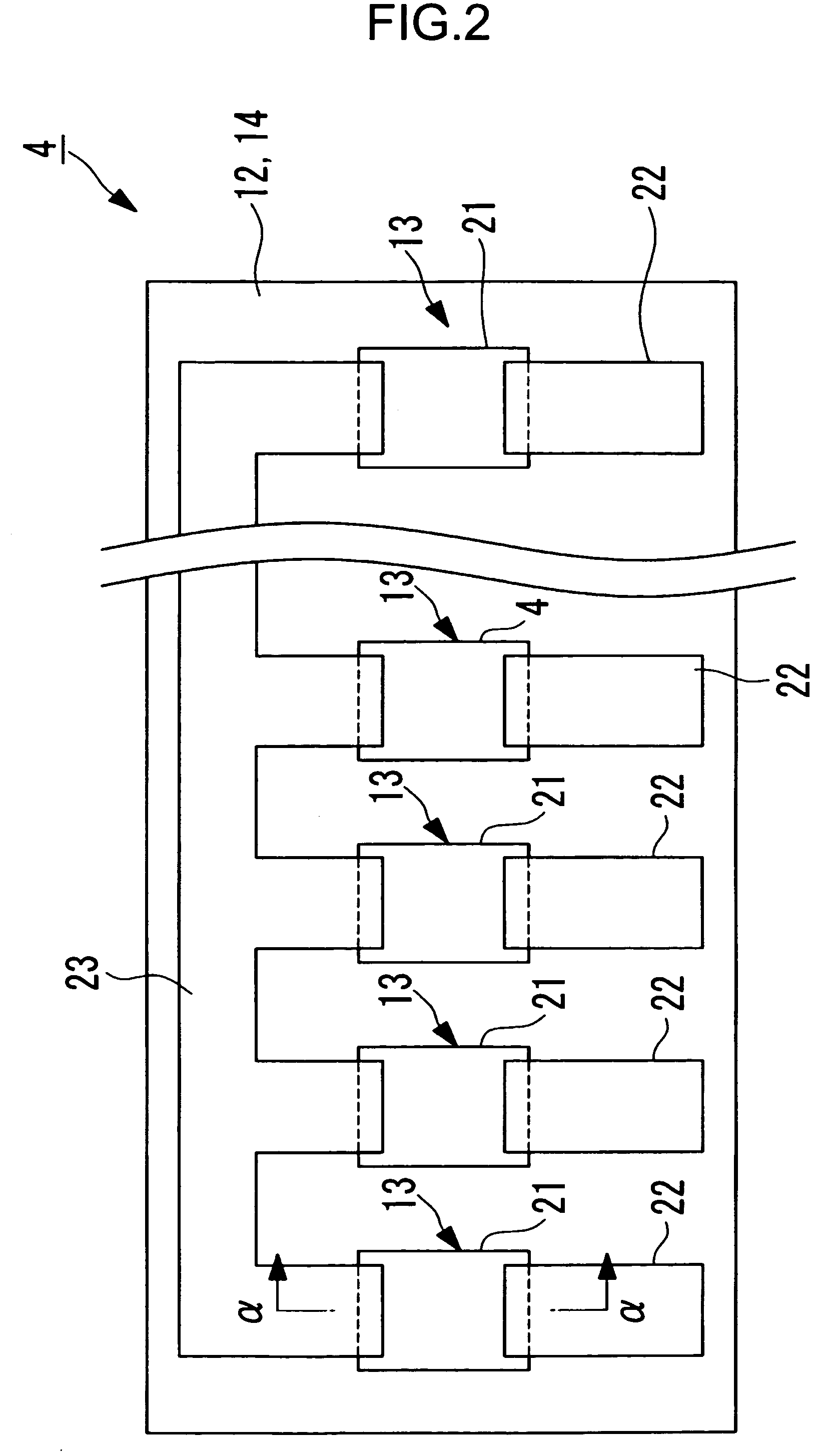Heating resistance element, thermal head, printer, and method of manufacturing heating resistance element
a technology of heating resistance element and thermal head, which is applied in the direction of printing, etc., can solve the problems of low heating efficiency, large heat radiation from the substrate, and the whole thermal head is brought up to a considerable high temperature, so as to achieve stable quality, low manufacturing cost, and low power consumption
- Summary
- Abstract
- Description
- Claims
- Application Information
AI Technical Summary
Benefits of technology
Problems solved by technology
Method used
Image
Examples
first embodiment
[0101]This embodiment shows an example where the present invention is applied to a thermal printer.
[0102]As illustrated in FIG. 1, a thermal printer 1 according to this embodiment is provided with a body frame 2, a platen roller 3 horizontally disposed, a thermal head 4 (heating resistance element) disposed so as to be opposed to an outer peripheral surface of the platen roller 3, a paper feed mechanism 6 for feeding a thermal paper 5 between the platen roller 3 and the thermal head 4, and a pressure mechanism 7 for pressing the thermal head 4 against the thermal paper 5 with predetermined pressing force.
[0103]The thermal head 4 is plate-like as illustrated in a plan view of FIG. 2, and as illustrated in a sectional view of FIG. 3 (a sectional view taken along the line α-α of FIG. 2 and viewed in the direction of arrows α of FIG. 2), has a substrate 11, a thermal storage layer 12 formed on one surface side of the substrate and made of, for example, glass, a heating resistor 13 provi...
second embodiment
[0148]A second embodiment of the present invention is described in the following with reference to FIG. 7.
[0149]A thermal printer illustrated in this embodiment uses a thermal head 31 instead of the thermal head 4 in the thermal printer 1 illustrated in the first embodiment.
[0150]In the following, as to the similar or identical members to the thermal head 4 illustrated in the first embodiment, the same symbols are used to designate the members and detailed description thereof is omitted.
[0151]The thermal head 31 is provided with a thermal storage layer 32 instead of the thermal storage layer 12 in the thermal head 4.
[0152]The thermal storage layer 32 is provided with a reflection layer 33 provided at a position spaced apart from the surface of the thermal storage layer 12 where the heating resistors 13 are formed along the surface.
[0153]Here, the reflection layer 33 may be formed by a metal layer, an organic layer, a colored glass layer, or the like.
[0154]The thermal storage layer 3...
third embodiment
[0161]A third embodiment of the present invention is described in the following with reference to FIG. 8.
[0162]A thermal printer illustrated in this embodiment uses a thermal head 51 instead of the thermal head 4 in the thermal printer 1 illustrated in the first embodiment.
[0163]In the following, as to the similar or identical members to the thermal head 4 illustrated in the first embodiment, the same numerals are used to designate the members and detailed description thereof is omitted.
[0164]The thermal head 51 is provided with a thermal storage layer 52 instead of the thermal storage layer 12 in the thermal head 4.
[0165]In the thermal storage layer 52, the hollow portions 26 are distributed also in a thickness direction of the thermal storage layer 12. More specifically, the density of the hollow portions 26 in the thermal storage layer 52 decreases as the hollow portions 26 approaches the surface where the heating resistors 13 are formed. In FIG. 8, an example is illustrated wher...
PUM
| Property | Measurement | Unit |
|---|---|---|
| distance | aaaaa | aaaaa |
| diameter | aaaaa | aaaaa |
| thickness | aaaaa | aaaaa |
Abstract
Description
Claims
Application Information
 Login to View More
Login to View More - R&D
- Intellectual Property
- Life Sciences
- Materials
- Tech Scout
- Unparalleled Data Quality
- Higher Quality Content
- 60% Fewer Hallucinations
Browse by: Latest US Patents, China's latest patents, Technical Efficacy Thesaurus, Application Domain, Technology Topic, Popular Technical Reports.
© 2025 PatSnap. All rights reserved.Legal|Privacy policy|Modern Slavery Act Transparency Statement|Sitemap|About US| Contact US: help@patsnap.com



